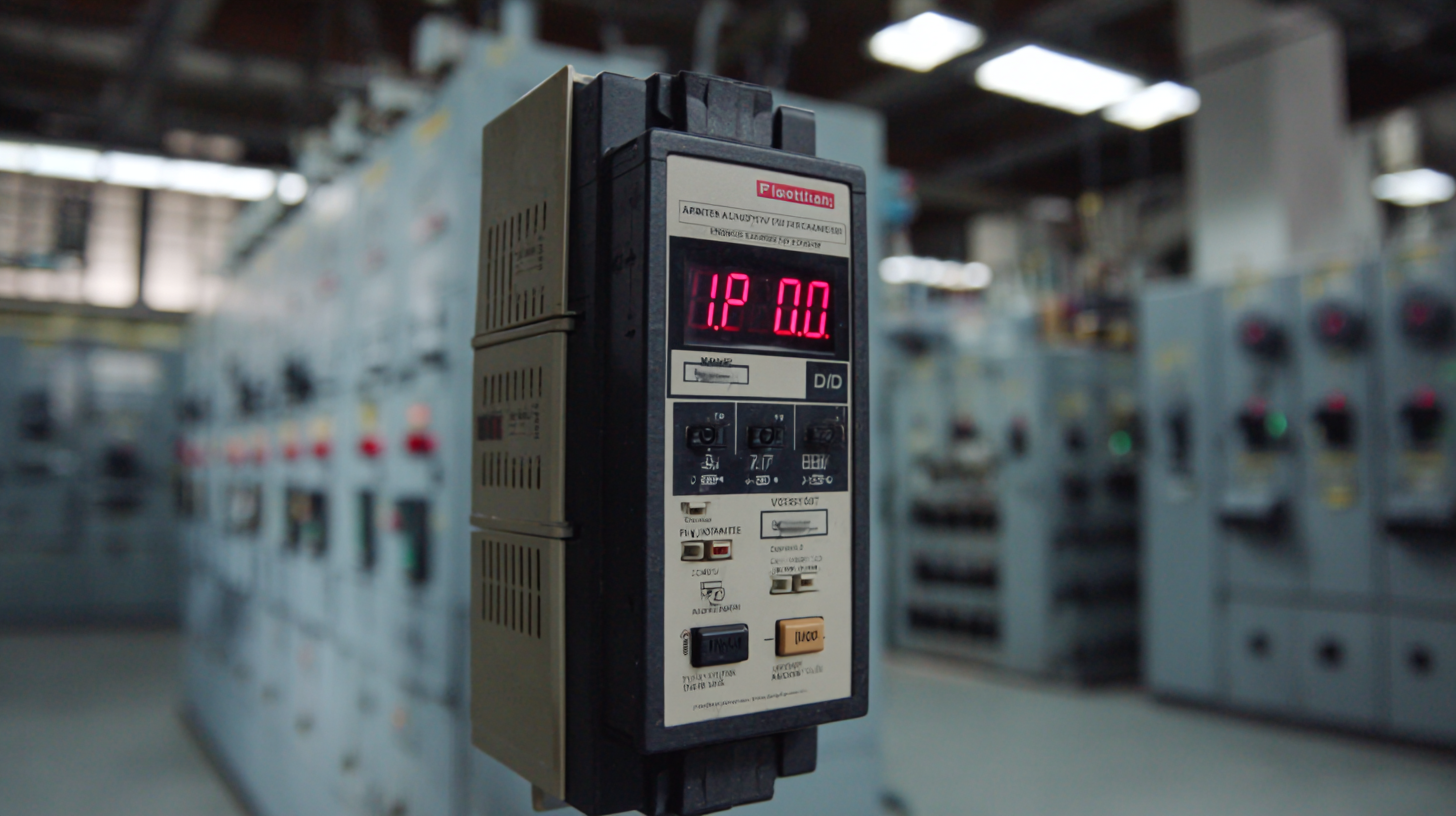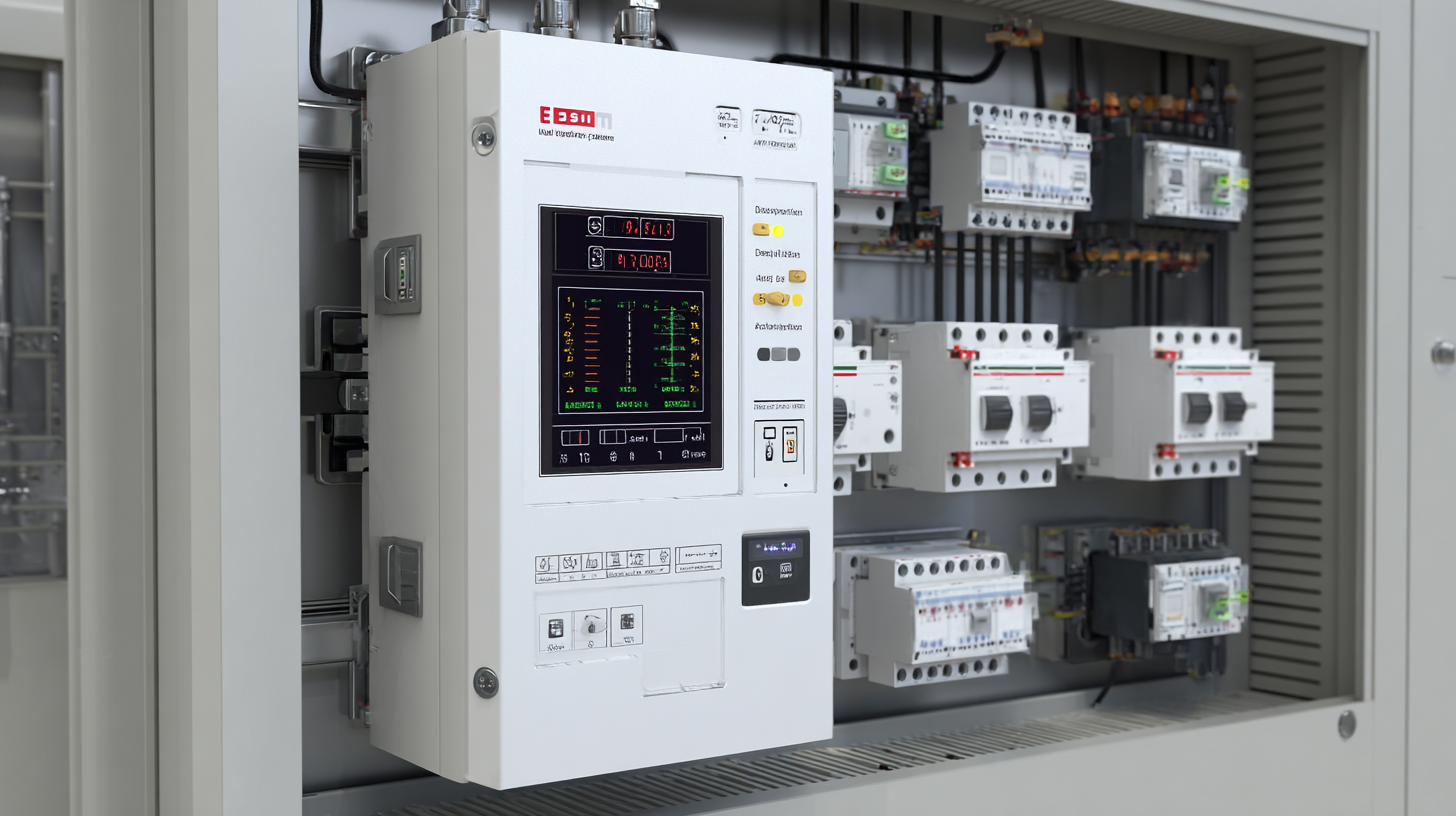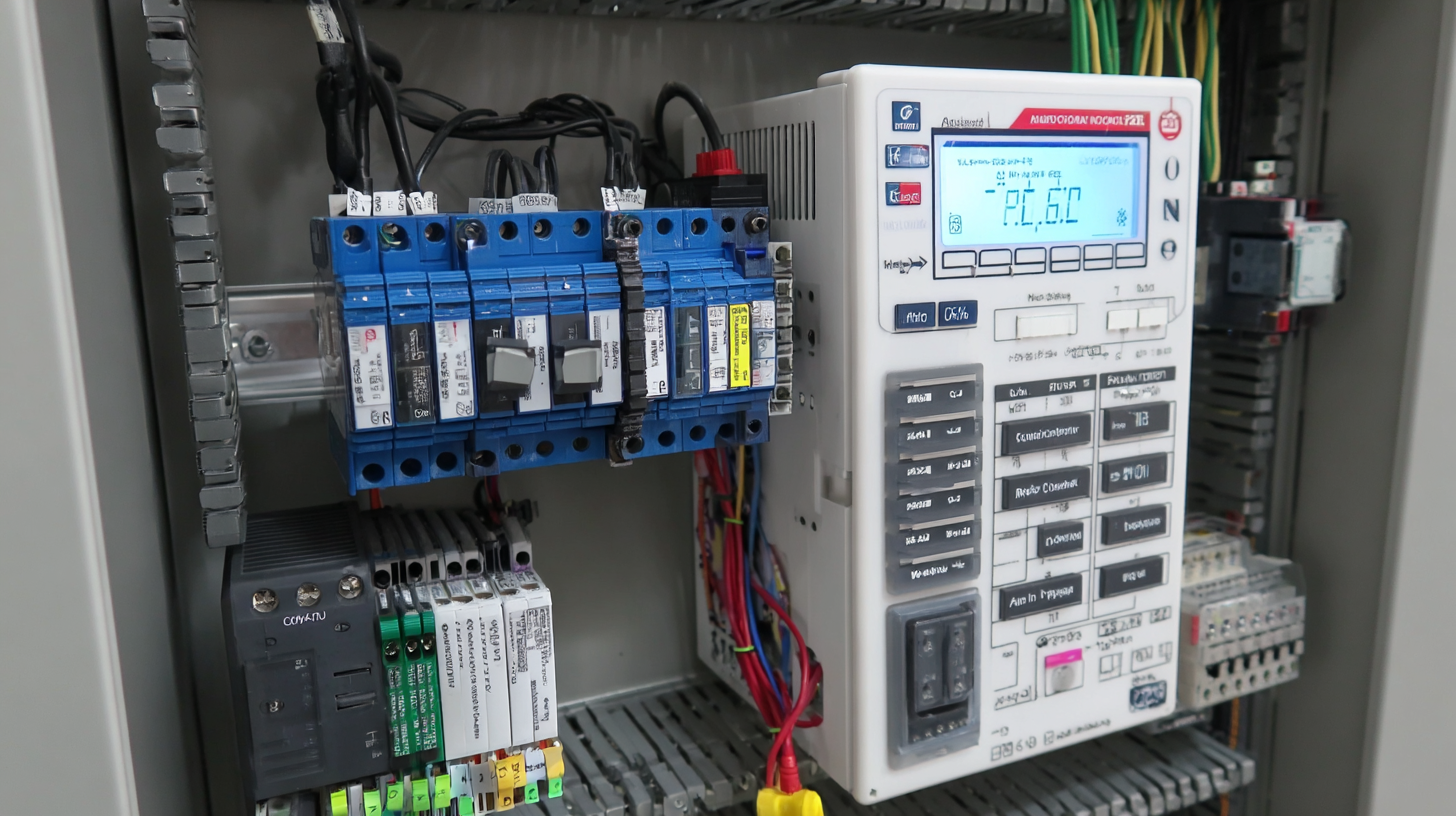How to Optimize Energy Efficiency with the Best Automatic Power Factor Controller
In today's rapidly evolving energy landscape, optimizing energy efficiency has become imperative for businesses striving to reduce operational costs and environmental impact. According to a report by the International Energy Agency (IEA), improving energy efficiency can lead to substantial savings, with potential reductions in energy consumption of up to 30% for industrial facilities. One effective solution to achieve this is the implementation of an Automatic Power Factor Controller (APFC), which enhances the power factor of electrical systems, thereby minimizing energy waste and lowering electricity bills.

The APFC not only stabilizes voltage levels and enhances the overall performance of electrical equipment but also supports regulatory compliance and grid stability. As industries continue to face rising energy costs, adopting advanced technologies like the APFC can significantly contribute to creating a more sustainable and cost-effective operational framework for the future.
Understanding Power Factor and Its Importance in Energy Efficiency
Understanding power factor is essential for improving energy efficiency in any electrical system. The power factor is a measure of how effectively electrical power is being converted into useful work output. A power factor of 1 indicates that all the energy supplied is being used efficiently, while lower values suggest there's a significant amount of wasted energy. Poor power factors can lead to increased electricity costs, overloading of electrical infrastructure, and reduced lifespan of electrical equipment.
To enhance your power factor, consider implementing an automatic power factor controller (APFC). This device optimizes the reactive power in your system, which is crucial in maintaining stability and efficiency. Here are a few tips to ensure you’re getting the most out of your APFC:
1. Regularly monitor your power factor levels to identify any fluctuations that may require intervention.
2. Conduct periodic maintenance of your APFC to ensure it's operating at peak efficiency and adjust settings based on your load demands.
3. Educate your team about the significance of power factor and how their practices can contribute to overall energy savings.
These steps will help you not only improve your power factor but also result in significant cost savings and energy efficiency for your organization.
Energy Efficiency Optimization with Automatic Power Factor Controllers
This bar chart illustrates the impact of different power factor values on energy efficiency in industrial settings. A higher power factor indicates better efficiency and less waste of energy.
Key Features to Look for in an Automatic Power Factor Controller
When considering an Automatic Power Factor Controller (APFC), understanding its key features is crucial for optimizing energy efficiency. One of the most significant attributes to evaluate is the controller's ability to adapt to varying load conditions. According to a report by the International Energy Agency (IEA), industries that implement intelligent power factor correction can reduce energy consumption by up to 30%. This adaptability ensures that the system can maintain optimal power factor levels even as operational demands fluctuate, ultimately leading to substantial cost savings.
Another essential feature is real-time monitoring capabilities. A study from the Energy Efficiency Directive reports that real-time data analytics can enhance system performance by identifying inefficiencies promptly. This feature allows operators to respond swiftly to abnormal conditions, thereby minimizing energy losses and maintaining compliance with regulatory standards. Furthermore, look for controllers that provide comprehensive reporting functionalities, which can help in assessing long-term performance and justifying investment decisions based on measurable outcomes. By focusing on these critical features, businesses can ensure they select an APFC that not only aligns with their energy management strategies but also supports corporate sustainability goals.
How to Optimize Energy Efficiency with the Best Automatic Power Factor Controller - Key Features to Look for in an Automatic Power Factor Controller
| Feature | Description | Benefits |
|---|---|---|
| Automatic Adjustment | Automatically adjusts the power factor based on real-time conditions. | Ensures optimal performance and reduces manual intervention. |
| LCD Display | User-friendly interface to view settings and power factor status. | Easier monitoring and adjustments for users. |
| Energy Monitoring | Tracks energy consumption and power factor over time. | Helps in identifying energy-saving opportunities. |
| Surge Protection | Protects the controller and connected devices from voltage spikes. | Increases the lifespan of equipment and ensures safety. |
| Communication Interfaces | Supports protocols like Modbus, RS-485 for integration with other systems. | Facilitates seamless communication with building management systems. |
How Automatic Power Factor Controllers Improve System Performance
Automatic Power Factor Controllers (APFCs) play a crucial role in enhancing the performance of electrical systems by maintaining optimal power factor levels. A power factor close to unity signifies efficient utilization of electrical energy, reducing losses that can occur when the factor is low. By automatically adjusting capacitor banks based on real-time load demands, APFCs help eliminate the need for manual intervention, ensuring that the system operates at peak efficiency without unnecessary power consumption.
The integration of APFCs into industrial and commercial systems leads to significant improvements in energy efficiency. These controllers dynamically respond to variations in power demand, helping to reduce reactive power and consequently, energy costs. With improved power factor, facilities can avoid penalties from utility companies and often benefit from minimized energy bills. Furthermore, APFCs enhance the lifespan of electrical equipment by preventing overheating and reducing the stress on transformers and generators, ultimately contributing to a more reliable and sustainable energy infrastructure.
Best Practices for Installing and Maintaining Power Factor Controllers
 Installing and maintaining power factor controllers is crucial for optimizing energy efficiency in industrial and commercial settings. According to the U.S. Department of Energy, an increase in power factor can lead to energy savings of up to 15%. Proper installation is paramount, as improper wiring or configuration can negate these benefits. Make sure to select a controller that matches the specific electrical characteristics of the system. Conducting a thorough load assessment before installation will help in choosing the right capacity controller and avoiding issues like overloading.
Installing and maintaining power factor controllers is crucial for optimizing energy efficiency in industrial and commercial settings. According to the U.S. Department of Energy, an increase in power factor can lead to energy savings of up to 15%. Proper installation is paramount, as improper wiring or configuration can negate these benefits. Make sure to select a controller that matches the specific electrical characteristics of the system. Conducting a thorough load assessment before installation will help in choosing the right capacity controller and avoiding issues like overloading.
Maintenance is another key aspect that can significantly affect the performance of power factor controllers. Regularly scheduled inspections can help identify potential issues before they become costly problems. It is recommended to clean the capacitors and connections at least once every six months and to monitor the system for harmonic distortion, as excessive harmonics can reduce efficiency and lifespan.
Tips:
- Utilize advanced monitoring tools to assess real-time power factor levels.
- Implement a predictive maintenance schedule to avoid unexpected downtime.
- Train staff on recognizing the signs of abnormalities in power factor levels to facilitate early intervention.
Comparing Different Types of Automatic Power Factor Controllers on the Market
When it comes to optimizing energy efficiency, selecting the right automatic power factor controller (APFC) is crucial. APFCs help improve the power factor in electrical systems, reducing energy losses and enhancing overall system performance. On the market, there are several types of APFCs available, each designed to meet specific needs and applications.
One common type is the fixed capacitor bank controller, which is suitable for systems with relatively stable loads. These controllers provide a straightforward solution for improving power factor by adding capacitance as needed. Another option is the automatic capacitor bank controller, which dynamically adjusts to varying loads, ensuring efficient real-time compensation. This type is particularly advantageous in industrial settings where load conditions fluctuate significantly throughout the day.
Furthermore, advanced microprocessor-based controllers offer enhanced features such as data logging, remote monitoring, and automated alerts. These smart controllers can analyze power quality and provide insights into energy usage, allowing businesses to make informed decisions about their energy management strategies. By comparing these different types of APFCs, organizations can select the most suitable technology that aligns with their operational requirements and budget constraints, ultimately leading to significant energy savings.

